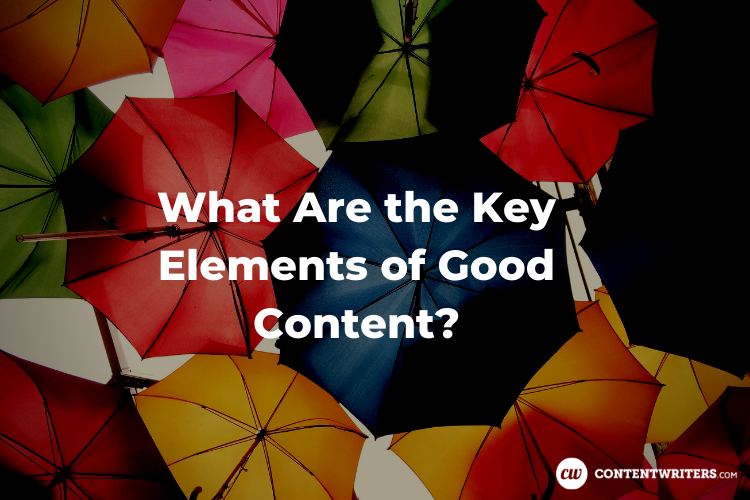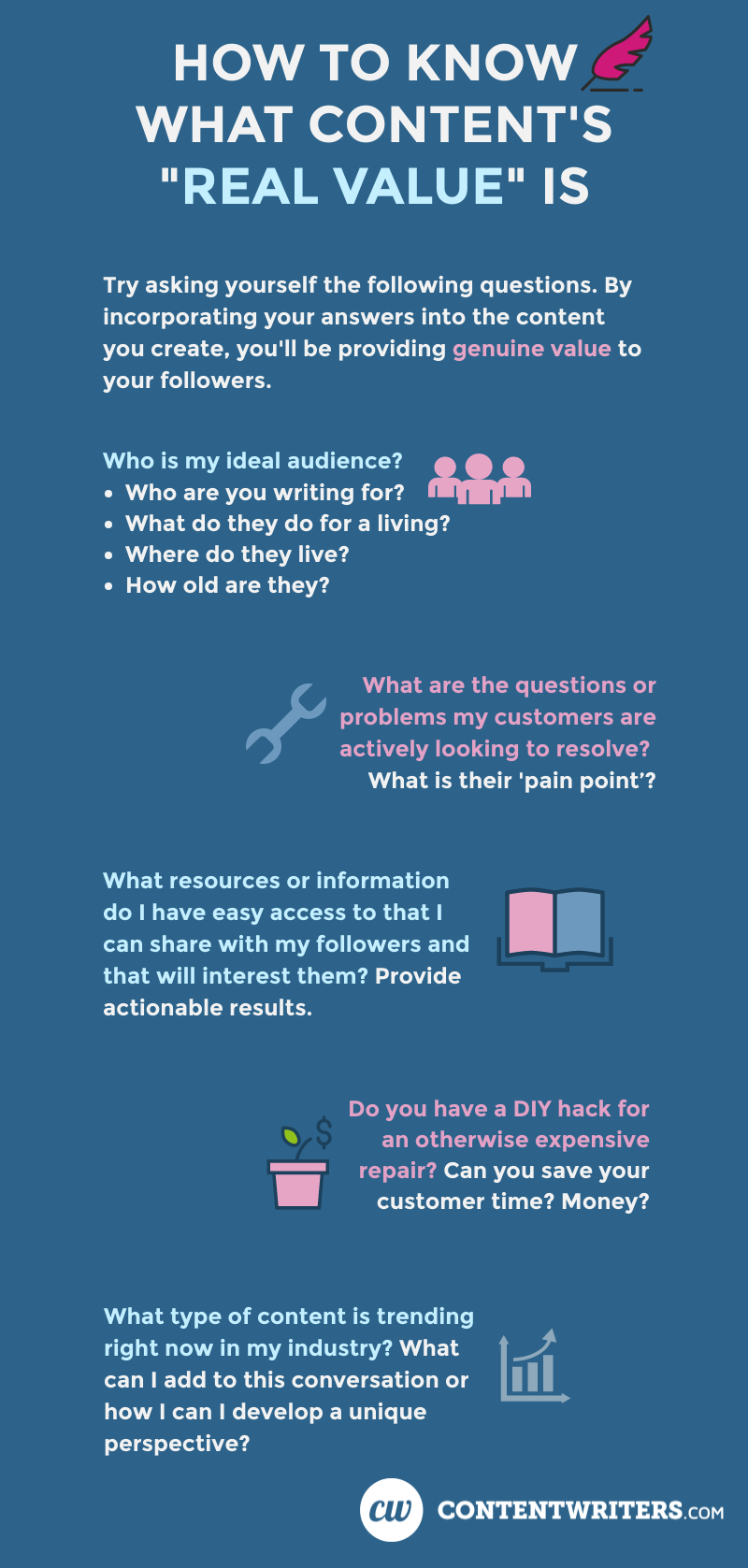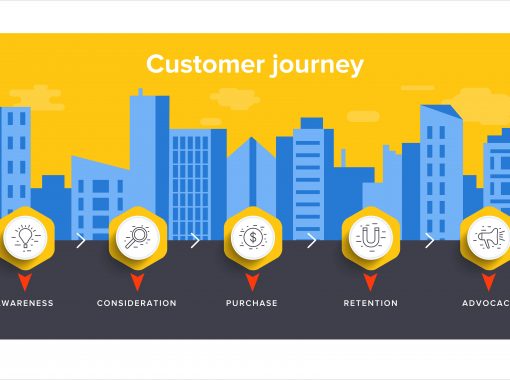
What Are the Key Elements of Good Content?
Good content allows search engines to find your website and the blogs you’ve written, and that’s good news for your brand. Good content builds authority while improving your website’s overall online ranking.
Why Good Content Matters
Good content starts by connecting your brand with new readers. It seamlessly funnels them toward your products and services. Good content will inspire your followers and position your brand as a thought leader in your industry.
What are the key elements of good content?
Be Original
When it comes to creating good content, “original” is the one word you need to remember at all times. Google and other search engines actually penalize websites that post duplicate content, considering them ‘spam’ sites.
Copying content from other people’s blogs is a no-no if you have dreams of creating a respected and successful online presence. Why? Because if Google thinks you aren’t publishing original material, they will bypass your site when it delivers results. Being ignored by Google is a definite death blow.
In addition to being original, you need to let some of your passion for your product or brand filter into the content you create. Genuine enthusiasm is a natural, effective choice when it comes to creating good online content because it builds trust. People believe and trust those who love what they do.

Think about the last time you read a blog post you didn’t like. Chances are it’s because you didn’t trust the voice or something seemed ‘off.’ Just like the way you can sense whether the person on the other end of the phone is smiling when they’re talking to you, your reader can tell when you’re speaking – and writing – from a place of passion.
Having a passion for your subject is a strong point when creating useful content. The next step is to combine that passion with a solid writing ability. A skilled writer with a firm understanding of marketing principles, who can also optimize your article and your headlines for search engines, will improve the quality of your original content. You’ll be turning up in search engine results, building authority, and generating new visitors to your site for years to come.
Use A Strong, Active Headline
The right headline will build your brand and attract new visitors, while a bad headline can send visitors running away.
Potential visitors use headlines as a way to evaluate online content. The headline helps them decide whether to click on the article or visit your site.
A good headline consists of making a promise to potential readers of more information. If your headline says one thing but fails to deliver on its promise, you’re committing “click-bait;” the bait-and-switch of the online marketing world. And that’s never a good idea. You might get a surge of clicks for that one article or blog post, but you’ll be tearing down your wall of authority. Many of the people who ‘fell’ for your headline will actively avoid your site in the future.
Questions are strong choices because they align your content with a problem that the person is currently thinking about and seeking an answer to. If you ask the same question a potential visitor to your site is asking, they will feel more comfortable about trusting your website for answers.
Create Content That Provides Value
Building on the passion and skill you’ve already added to your content plans, it’s time to look at the value provided by your content. All the passion and expertise in the world won’t translate into new leads if you fail to deliver real value to your readers.

Visitors are naturally drawn to content that offers answers to questions they already have or potentially provides a solution to a pain-point they’re dealing with daily. By identifying what your ideal audience is struggling with, you’ll not only be able to create relevant, added-value content that can make a difference to their day, but you’ll also attract new visitors and build your authority.
Authority only comes when you consistently deliver real value to your followers.
Offer Proof
Once you have established your position of authority as a thought leader in your industry, your opinion will hold a lot of weight. But until that date, you’ll need to back up what you say with cold, hard, irrefutable facts. This helps in two ways:
- You’ll help your readers get the information they need
- You’ll once again be building your authority.
Because statistics and resource documents add to the credibility of your arguments, citing sources and offering proof builds followers’ trust in you and your brand seamlessly.
Consider this:
If I tell you that a lot of people check out a blog post before they make a purchase, you might find it interesting, but you won’t be ready to make a decision based on my statement
But if instead I share with you that, according to Hubspot, 47% of buyers read between 3 and 5 pieces of online content before reaching out to a sales rep? And if I then provide a link that backs up my claim, my comment packs more of a marketing punch and could potentially spur you on to the next level of your decision-making process.
Linking any claims you make in your blog posts to high-level, reputable sources throughout your post is another crucial element of good content.

What’s good top of funnel (ToFu) content?
The top of the sales funnel is where potential customers hover. They’ve got problems they’re actively trying to resolve, but they’re not confident about what their next step should be. In other words, they’re undecided. And that’s why ToFu content is so critical.
Readers in this phase are still researching and gathering information about their problem. That’s why providing real value in the form of actionable content at this point in the buyer journey is so important. It’s at this stage that a potential customer is the most open to new ideas and possible solutions.
Smart, information-rich content that ranks high in search engine results, cites resources, and provides actionable takeaways will attract ToFu readers to your content.
ToFu vs. Nurturing Content
In its purest form, lead nurturing has one goal: to attract prospects and get them to choose your brand when the time comes for them to buy.
Good content can help maintain and nurture relationships with both existing and potential customers throughout the complete buyer journey, not just at a particular phase. Nurturing content also helps to build brand authority and awareness.
Lead nurturing content describes the relationship-building process with potential customers on top of the buyer funnel. It not only engages potential customers by educating them, but also builds awareness and provides value through the products and services you offer.
Creating outstanding blog posts and articles that incorporate the critical elements of good content requires effort and commitment, but that doesn’t mean it has to be complicated.
By linking to high-quality sources and writing strong headlines, consistently improving your blog content, developing its value & quality while building your brand authority and trust, you’ll quickly set yourself apart from the bulk of the competition.
Freedom is an award-winning writer and marketer. In her current role as a B2B digital marketing specialist. Her writing has appeared in global publications including The Independent (UK), Huffington Post (USA), The Telegraph (UK), The Chicago Sun-Times, The Los Angeles Times, The Jerusalem Post, and more.




